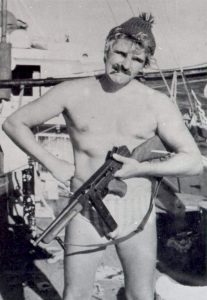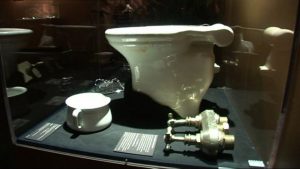Protecting the Underwater Cultural Heritage

Laura Gongaware
Introduction
Although cultural heritage located on land receives extensive legal protection in almost every country in the world, cultural heritage located underwater, known as underwater cultural heritage, receives little, if any, protection. For underwater archaeologists, this difference in protection is perplexing because historic shipwrecks, a subcategory of underwater cultural heritage, are unique time capsules.
Underwater Cultural Heritage is Invisible

Whereas most land-based archaeological sites are composed of several settlements built one on top of the other, each historic shipwreck is representative of one moment in history and provides a unique glimpse into ancient maritime trade and transportation. Historic shipwrecks are also representative of maritime trade and transportation. Therefore, one shipwreck can tell archaeologists more about cross-cultural interactions than several land sites put together. As a result, historic shipwrecks are invaluable underwater cultural resources that deserve to be protected and studied carefully. Unfortunately, many historic shipwrecks sank carrying monetarily valuable cargo and are, therefore,highly sought after by treasure salvors looking to exploit these wrecks commercially. In their search for monetarily valuable cargo, treasure salvors of-ten destroy the non-monetarily valuable aspects of a historic ship, thus destroying each artifact’s provenience.
The commercial exploitation of underwater cultural heritage is banned under the United Nations Educational, Scientific and Cultural Organization’s (UNESCO) Convention on the Protection of the Underwater Cultural Heritage of 2001 (2001 UNESCO Convention). This ban also prohibits the exhibition of underwater cultural heritage that has been commercially exploited in a state that is party to the 2001 UNESCO Convention. The scope of this ban is problematic because commercial exploitation is not defined in the Convention and determining what constitutes commercial exploitation has been more difficult in practice than the drafters of the Convention seem to have anticipated. The prohibition on the exhibition of commercially exploited underwater cultural heritage can bar academics from studying these valuable resources and prevent the public from enjoying them.
Chapter 1 of my thesis is an introduction to the subject.
Chapter 2 of my Thesis discusses the specific language of the Convention’s ban on commercial exploitation, with a particular focusing on rule 2 of the Convention’s Annex, which contains two exceptions to the ban.
Chapter 3 and Chapter 4 discuss specific shipwrecks that commercial companies have salvaged. Although the salvage of these wrecks occurred before the Convention entered into force, these wrecks provide interesting case studies because of the recent controversies surrounding either the display of underwater cultural heritage from these wrecks or the potential sale of that underwater cultural heritage.
Chapter 3 looks at the salvage of the Belitung shipwreck, a ninth-century Arabian vessel that sank off the coast of Indonesia, and analyzes whether that salvage violates the Convention’s ban on commercial exploitation.

Chapter 4 analyzes the salvage of the R.M.S. TITANIC by commercial salvor R.M.S.Titanic, Inc. with a particular focus on article four of the Convention.
Chapter 5 concludes my Thesis, summarizing the current status of the ban on commercial exploitation and what this ban means for commercially exploited underwater cultural heritage.
Publications
Gongaware, L., 2013. Finding a Middle Ground in the Protection of Underwater Cultural Heritage. MA Thesis, Department of Anthropology, Texas A&M University.
